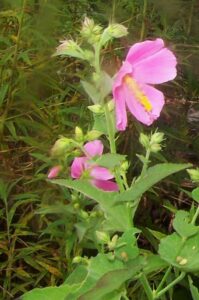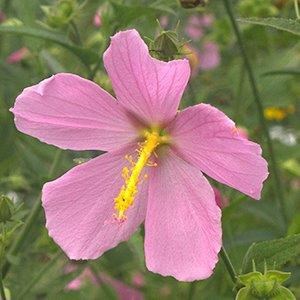Kosteletzkya Pentacarpos (Coastal Mallow, Seashore Mallow)
go.ncsu.edu/readext?1072954
en Español / em Português
El inglés es el idioma de control de esta página. En la medida en que haya algún conflicto entre la traducción al inglés y la traducción, el inglés prevalece.
Al hacer clic en el enlace de traducción se activa un servicio de traducción gratuito para convertir la página al español. Al igual que con cualquier traducción por Internet, la conversión no es sensible al contexto y puede que no traduzca el texto en su significado original. NC State Extension no garantiza la exactitud del texto traducido. Por favor, tenga en cuenta que algunas aplicaciones y/o servicios pueden no funcionar como se espera cuando se traducen.
Português
Inglês é o idioma de controle desta página. Na medida que haja algum conflito entre o texto original em Inglês e a tradução, o Inglês prevalece.
Ao clicar no link de tradução, um serviço gratuito de tradução será ativado para converter a página para o Português. Como em qualquer tradução pela internet, a conversão não é sensivel ao contexto e pode não ocorrer a tradução para o significado orginal. O serviço de Extensão da Carolina do Norte (NC State Extension) não garante a exatidão do texto traduzido. Por favor, observe que algumas funções ou serviços podem não funcionar como esperado após a tradução.
English
English is the controlling language of this page. To the extent there is any conflict between the English text and the translation, English controls.
Clicking on the translation link activates a free translation service to convert the page to Spanish. As with any Internet translation, the conversion is not context-sensitive and may not translate the text to its original meaning. NC State Extension does not guarantee the accuracy of the translated text. Please note that some applications and/or services may not function as expected when translated.
Collapse ▲Kosteletzkya pentacarpos (Coastal Mallow, Seashore Mallow)
Article by Extension Master Gardener℠ volunteer Kathryn Copley
Eye-catching solitary hibiscus-like 1 ½ – to 2 ½-in. pink flowers appear on Seashore Mallow from July to October, with their nectar attracting pollinators like hummingbirds, butterflies and other pollinators.
Common names include:
- Coastal Mallow
- Seashore Mallow
- Previously known as Kosteletzkya virginica
Seashore mallow is a low-maintenance native short-lived subshrub in the Malvaceae (mallow) family (the same family as cotton). Also known as sweat weed, Virginia saltmarsh mallow, and salt marsh mallow, this native plant is found in marshes and brackish water along the eastern seashore of the United States.
Seashore mallow is moderately salt tolerant, growing in full sun (6 or more hours of direct sunlight a day) in wet to well-drained but moisture-retentive sites. It can handle occasional flooding.
It grows 3- to 6-ft. tall and 2- to 4-ft. wide with soft gray-green angular leaves.
Consider including Seashore Mallow in a butterfly, native plant, pollinator, rain or water garden.
This plant was selected as the 1990 NC Wildflower of the Year, a program managed by the North Carolina Botanical Garden with some financial support from the Garden Club of North Carolina.
Resources
- NC Extension Gardener Plant Toolbox: Kosteletzkya pentacarpos
- Florida Native Plant Society: Kosteletzkya pentacarpos
By Kathryn Copley, Extension Master Gardener℠ volunteer, Brunswick County, NC. For more information on gardening in Brunswick County, please call the Brunswick County Cooperative Extension Office 910-253-2610





